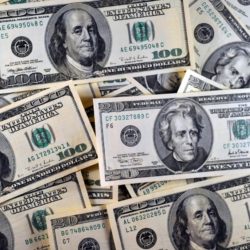Consumer outlays jumped 1% in April, while personal income rose 0.4%, the latest sign of stronger economic growth
The Commerce Department released personal income and spending data Tuesday. PHOTO: KAREN BLEIER/AGENCE FRANCE-PRESSE/GETTY IMAGES
By  JEFFREY SPARSHOTT
JEFFREY SPARSHOTT
Updated May 31, 2016 10:06 a.m. ET
WASHINGTON—Consumer spending advanced at the fastest pace in nearly seven years in April, the latest sign of stronger economic growth following a sluggish start to the year.
Personal spending, which measures how much Americans paid for everything from raincoats to restaurants, increased 1.0% in April from a month earlier, the Commerce Department said on Tuesday. That was biggest one-month jump since August 2009.
Consumption had climbed 0.2% in February and was flat in March.
Household spending accounts for more than two-thirds of economic output in the U.S. and has been a driving force for the expansion for more than five years. But consumers had been steadily pulling back since mid-2015, one factor behind the paltry economic growth in the first quarter of the year.
Now it looks like the economy is picking up again, following a familiar pattern of a gloomy winter leading into a brighter spring.
“After a six-month lull, consumers emerged able and willing to spend more freely in early spring,” said Gregory Daco, head of U.S. macroeconomics at Oxford Economics. “This is good news for the economy as solid employment, firming wage growth and upbeat confidence should support the upbeat momentum in” the second half of the year.
Tuesday’s report also showed steady gains in income, suggesting the labor market remains robust, and signs of firming inflation. Federal Reserve officials are watching those key metrics as they weigh another move on the central bank’s benchmark interest rate.
The Fed raised rates in December but has since held off amid financial-market turbulence and unsteady growth overseas. While U.S. companies still seem hesitant to invest, hiring has been solid and consumers again look poised to propel economic growth.
“The solid rebound in spending will likely be interpreted at the Fed as a key indication that the economic recovery has regained its footing after the missteps over the past three quarters,” said Millan Mulraine, deputy chief macro U.S. strategist at TD Securities.
Consumer spending on durable goods was particularly robust in April, likely reflecting healthy auto sales during the month.
Personal income, including earnings from wages and other sources, rose 0.4% in April.
Americans had been socking away money but now appear a little more confident. The personal saving rate in April was 5.4%, down from March’s 5.9% and the lowest level of the year.
Relatively low inflation, meanwhile, has helped bolster consumer sentiment. Even with signs inflation is firming, price rises remain muted.
The personal-consumption expenditures price index, the Fed’s preferred inflation measure, rose 0.3% in April from the prior month, the firmest reading since May 2015. From a year earlier, the index climbed 1.1%, undershooting the Fed’s 2% target for the 48th straight month.
So-called “core” prices, which exclude the volatile categories of food and energy, rose 0.2% from the prior month and 1.6% from a year earlier.
“Indications that inflation is picking up will likely give the [Fed] the reassurance to raise the fed-funds rate when it meets in late July,” said Stuart Hoffman, chief economist at PNC Financial Services.
The Fed next meets June 14-15, and then July 25-26.
Adjusted for inflation, consumer spending rose 0.6% and disposable personal income—income after taxes—rose 0.2%. The inflation-adjusted spending increase was the strongest since February 2014.

Comments are closed